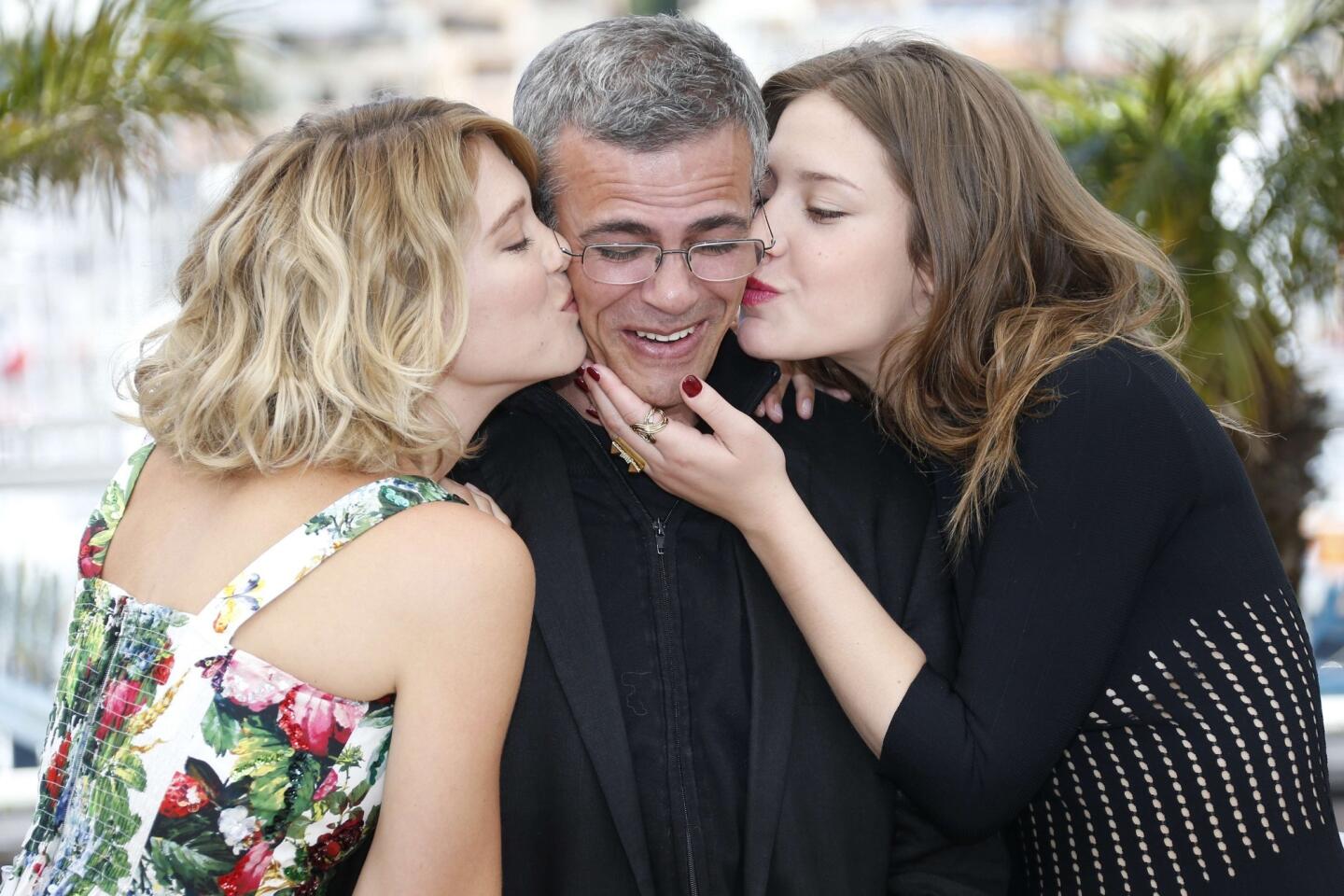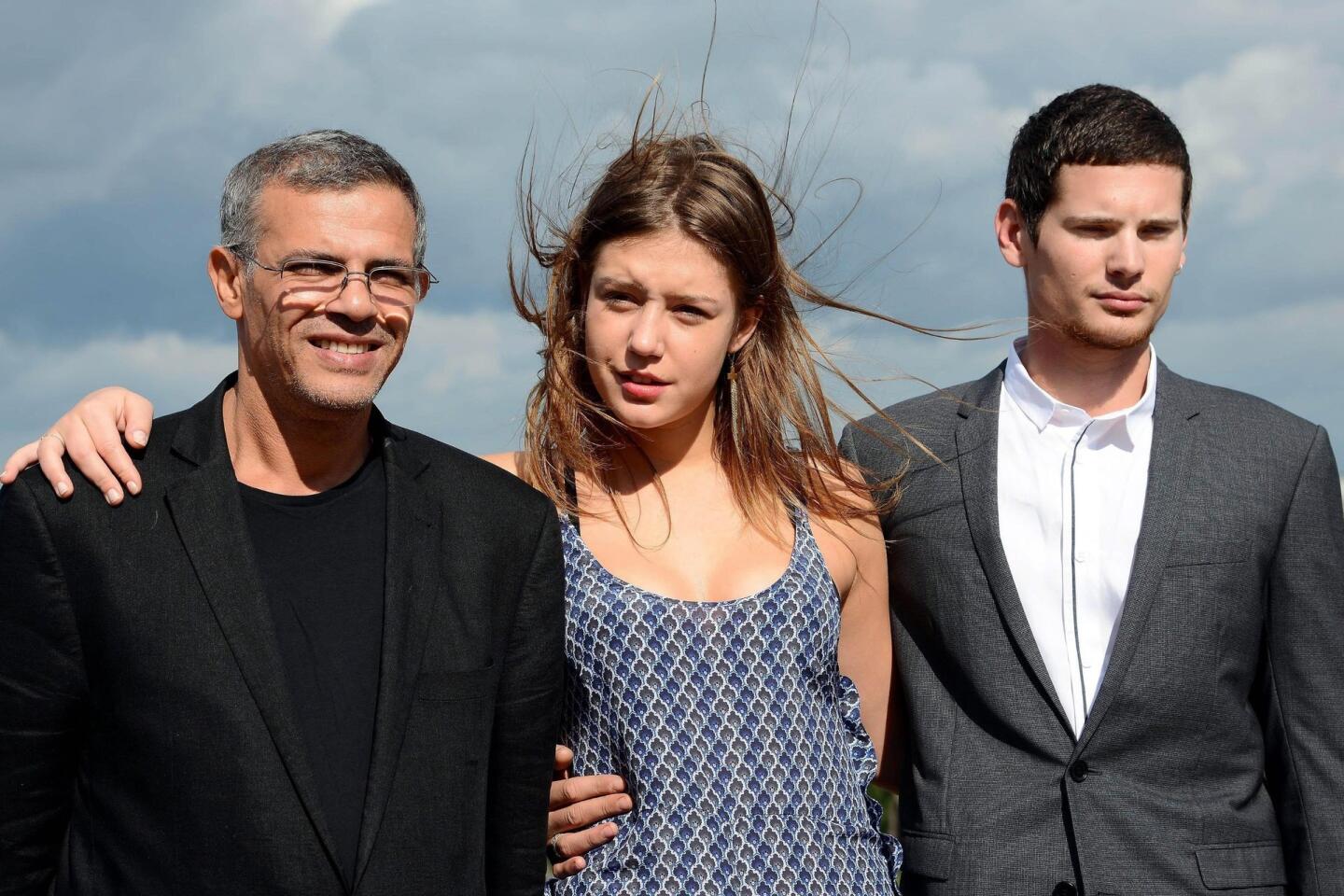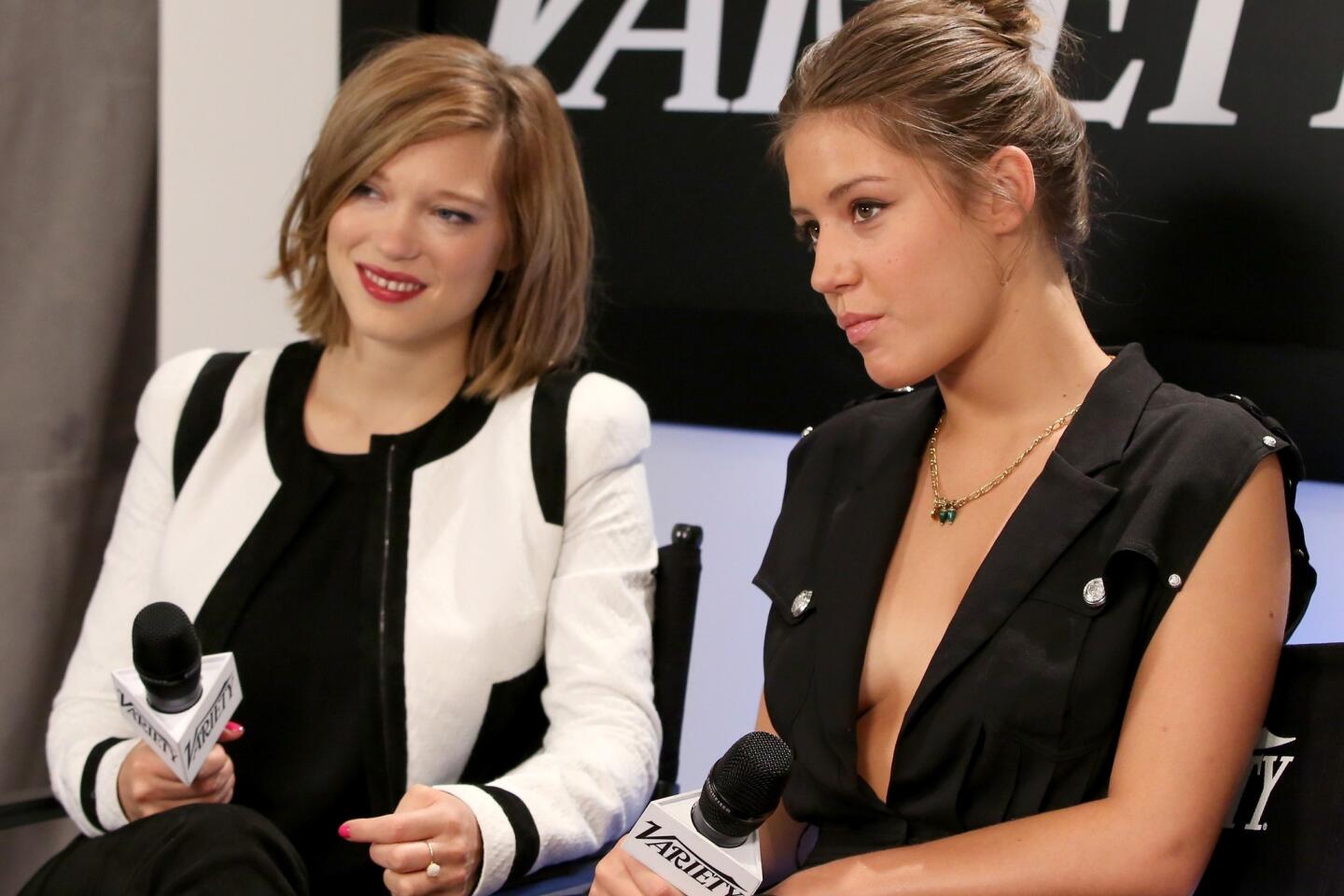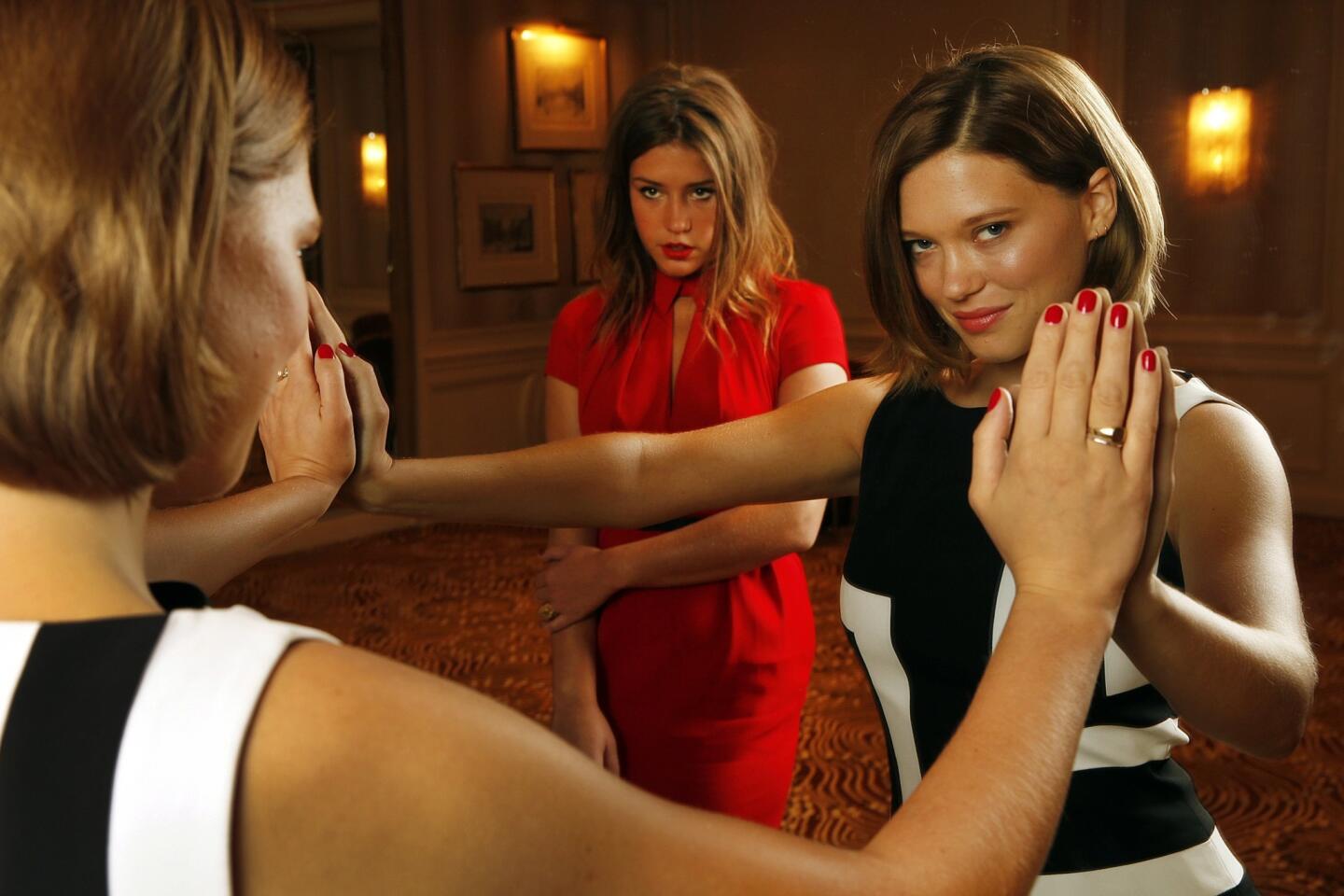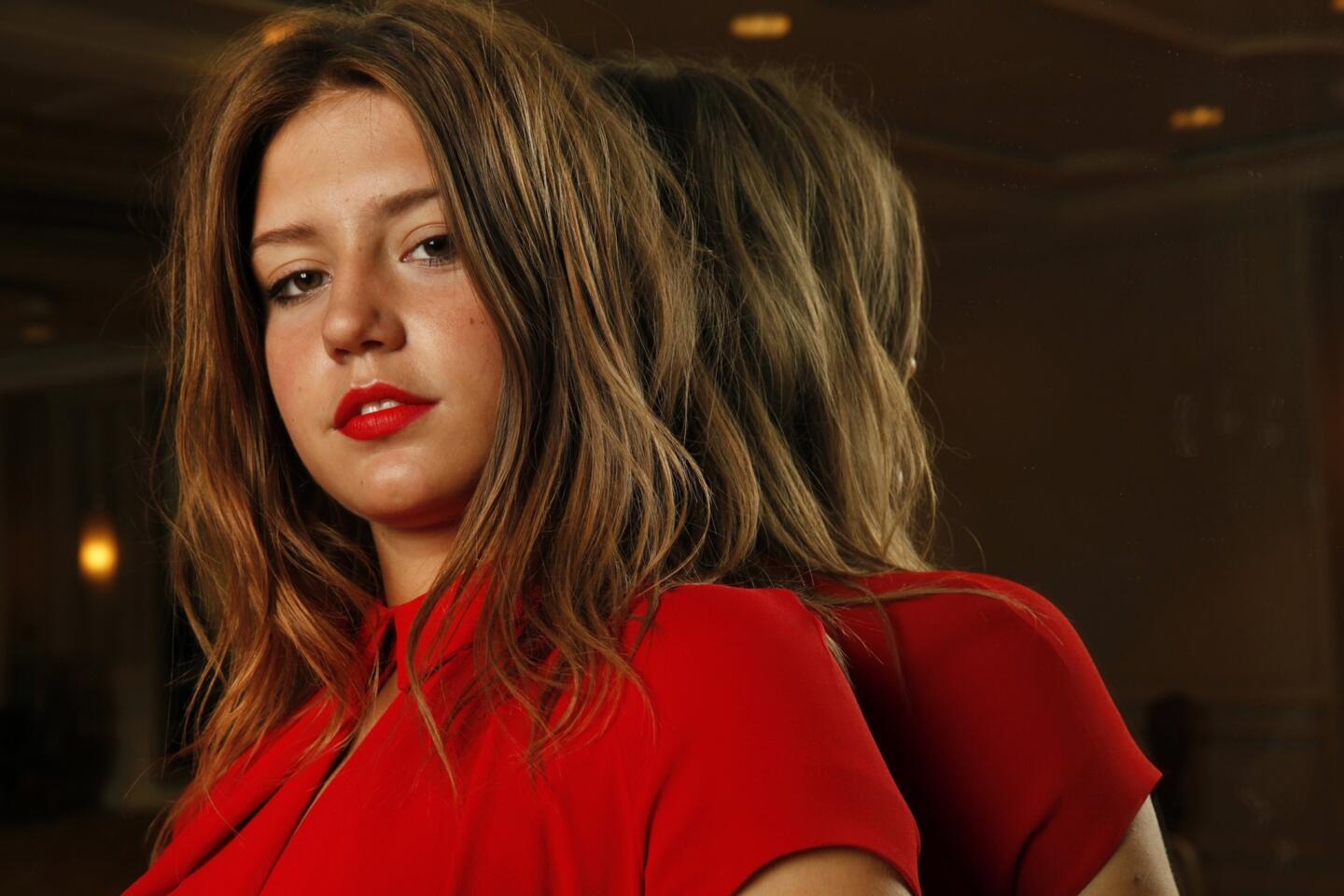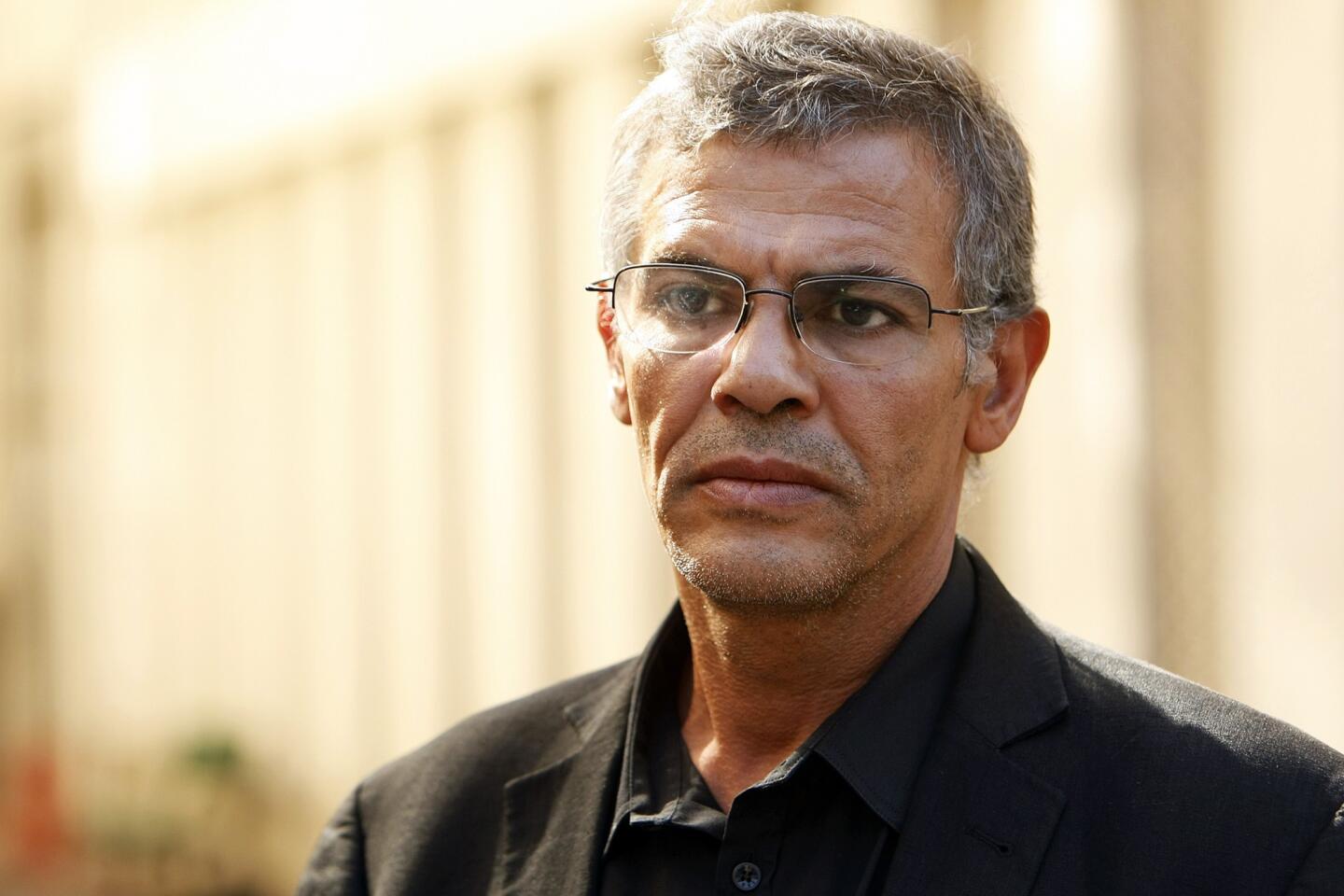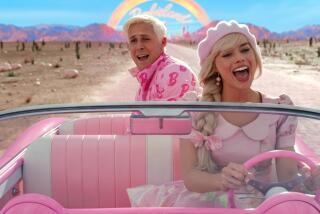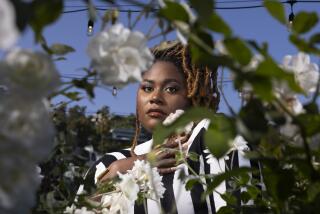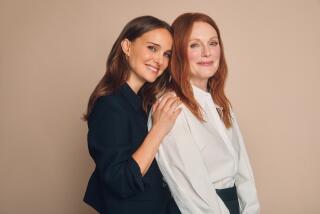White-hot debate follows ‘Blue Is the Warmest Color’
— In “Blue Is the Warmest Color,” Adèle Exarchopoulos plays a French student who has an intensely passionate, excruciatingly painful relationship with an older woman (Léa Seydoux). Making the film, she says, was much the same.
“He changed my life,” Exarchopoulos said of writer-director Abdellatif Kechiche, who based the story on the first half of Julie Maroh’s graphic novel. “Not because of this movie, but because of the experience.”
FOR THE RECORD:
“Blue Is the Warmest Color”: An article in the Nov. 21 issue of The Envelope said that actresses Lea Seydoux and Adele Exarchopoulos shared the acting prize at Cannes Film Festival this year. The “Blue Is the Warmest Color” actresses, along with their director, Abdellatif Kechiche, were awarded the festival’s Palme d’Or. “Nebraska” actor Bruce Dern won the acting prize. —
The experience, for all involved, by all accounts, seems to have been a rocky one, but the reviews for the October release have been strong, especially for Exarchopoulos and Seydoux, who shared the acting prize at the Cannes Film Festival. Exarchopoulos, who’d previously had just small parts in films, in particular is now turning up on several award contenders lists. So what was all the fuss about?
PHOTOS: ‘Blue Is the Warmest Color’: The women, the scenes, the director
After “Blue” premiered in Cannes, Maroh raised questions about the film’s explicit sex scenes, the longest of which runs for seven minutes, and about the makeup of the crew who filmed them. (“It appears to me that this is what was missing on the set: lesbians.”) But that was a summer shower compared with the storm that erupted in September, after Seydoux told a reporter from the Daily Beast that making the film was “horrible,” and both actresses suggested they’d never work with Kechiche again.
A week later at the Toronto International Film Festival, the tempest was still raging, and though Kechiche and his stars played nice in public, the director made no attempt to sugarcoat his displeasure at Seydoux’s public statements.
“There are many explanations possible for her declaration,” Kechiche said in French. “I think it comes from the fact that she doesn’t know what being an actress is. Perhaps she needs to ask herself if she really loves this profession, if she has the desire to explore something within herself and if she is ready to accept what that implicates.”
Seydoux had made dozens of films before “Blue,” with such directors as Quentin Tarantino, Woody Allen and J.J. Abrams. But for Kechiche, her previous work was at best unimportant, at worst an obstacle. “She played images, archetypes,” he said. “She was play-acting, more than interpreting a character.” As opposed to the neat regimentation of a studio production, Kechiche worked in long, free-form days where the actors might turn up on the set having no idea what they’d be doing that day.
Exarchopoulos was mostly unfazed by the eruptions, saying “Blue” was “my first experience with a man like this, a genius like this.” The shoot, the length of which Kechiche said he had to double to break down Seydoux’s resistance, was difficult, but for Exarchopoulos, “It’s not always bad. There is always a kind of manipulation. We take our own emotions; we cannot keep things for ourselves. We think, ‘Is this too vulnerable? Did I give too much? Is he using me?’ No, he’s using it for the movie, and sometimes you get lost.”
“We are really complementary and opposite,” Exarchopoulos said of Seydoux, who has remained a friend. “I like to be in the moment. I look at people in the eyes. Léa is with you, but she has a really interior world. It’s not distance or pretension, but there are layers between you — in our friendship, I can’t explain why. Maybe it’s because of this.”
Perhaps this award season will find a way to honor survivors of difficult shoots.
More to Read
Only good movies
Get the Indie Focus newsletter, Mark Olsen's weekly guide to the world of cinema.
You may occasionally receive promotional content from the Los Angeles Times.
